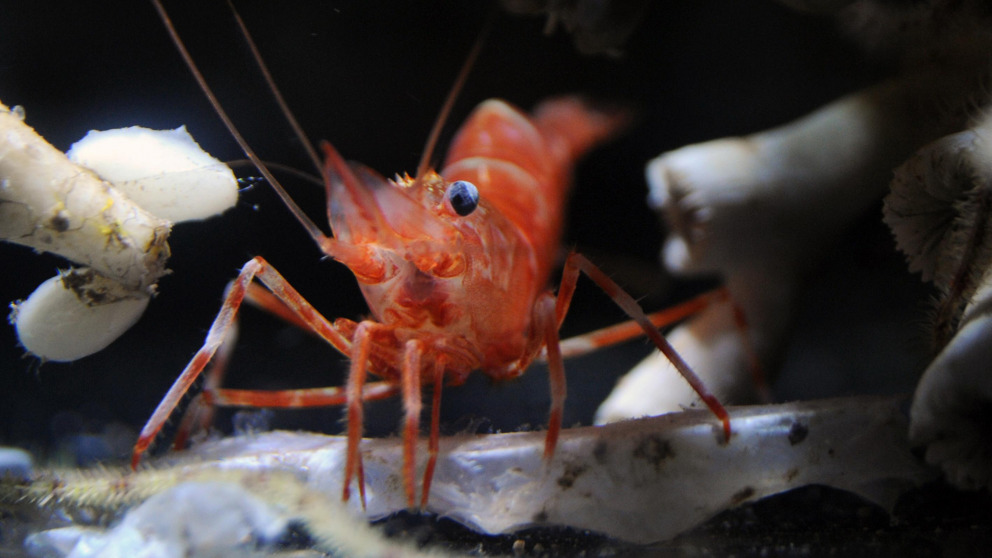Headline:
Benefit Sharing and the Common Heritage of Mankind: Policy Brief Makes Recommendations for the Governance of Deep Seabed Mining
How could the exploitation of the resources of the deep seabed conceivably benefit humanity? What risks does such exploitation pose to the marine environment? And how can we ensure that governance in this area is fair – for all of humankind? The latest IASS Policy Brief examines what the International Seabed Authority can do to reconcile the use of the ‘common heritage of mankind’ with the global sustainable development goals formulated in the 2030 Agenda.

The seabed and subsoil beyond national jurisdiction (the ‘Area’) as well as the resources contained therein belong to all of humankind and may only be exploited for the common good. This is stipulated in the United Nations Convention on the Law of the Sea (UNCLOS), which has declared the Area the common heritage of mankind. Founded in 1994, the International Seabed Authority (ISA) determines access requirements, sets mining rules, and concludes agreements with state or private entities for the exploration and subsequent mining of deep-sea resources. One of its main tasks is to ensure that such activities deliver positive net benefits to humankind and that those benefits are shared equitably.
In the 36 years since the adoption of UNCLOS, international awareness of the need to protect our oceans has grown considerably. Originally, the discovery of new mineral resources in the oceans fuelled hopes that they could satisfy the needs of industrial nations while also giving third world countries a development boost through benefit sharing. Nowadays we are far more conscious not only of the technical difficulties presented by deep seabed mining but also of the risks of destroying the largely unknown ecosystems of the deep ocean. At the same time, new technologies and concepts for recycling and circular economies have emerged as alternatives to mineral exploitation. In the light of increasing pressures on our oceans, which are leading to the very tangible loss of species and habitats, the principles of conservation and sustainable use of the oceans have been to the fore in recent international agreements and treaties.
To coincide with the 24th annual conference of the International Seabed Authority this month, the IASS, together with the German Environment Agency and other co-authors, has published a Policy Brief with recommendations that urge the ISA to consider environmental and climate protection as well as the equitable sharing of any financial gains in the ongoing process of drawing up new, binding, and internationally recognised rules for the exploitation of the resources of the deep seabed.
These recommendations for action refer explicitly to the commitments UN member states have made to pursue the sustainable development goals (SDGs) formulated in the 2030 Agenda for Sustainable Development, above all SDG 14 for oceans. States thus have an obligation to interpret the ‘common heritage of mankind’ defined in UNCLOS in the light of the sustainable development goals and with a view to the well-being of future generations.
The authors present their recommendations in the form of four key messages addressed to delegates, international observers, and other ISA conference participants:
Message 1: Interpret common heritage in the light of new knowledge and the SDGs
The ISA must ensure that the conduct of activities in the Area adheres to the common heritage principle. The principle should be interpreted in accordance with contemporary knowledge and up-to-date information, and in the spirit of the 2030 Agenda for Sustainable Development.
Message 2: Ensure that activities deliver positive net benefits to humankind
A comprehensive cost-benefit analysis, including an assessment of the impact of any mining activities on the natural capital of the Area and on other potential uses of the deep sea is required. This analysis and a broad discussion of its findings should take place before activities commence. As deep seabed mining will inevitably degrade ecosystems of the seafloor and water column, all potential options, including alternatives to marine mineral mining, need to be fully considered.
Message 3: Take a precautionary approach to protect the common heritage of mankind
Given the potential harms arising from seabed mining and our limited knowledge of the deep sea and open ocean, a precautionary approach is crucial to protect the marine environment. The regulatory system has to be based on the best available scientific evidence, techniques and environmental practices and should integrate regional management objectives, adaptive approaches, strengthened interfaces with science, and strong enforcement mechanisms.
Message 4: Consider the concerns of civil society and the interests of future generations
Broad public participation, transparency, and consideration of the social and cultural impacts of activities are necessary to ensure that due regard is given to the interests of civil society, in particular in developing countries, and of future generations.
Further information
Christiansen, S., Ginzky, H., Singh, P. and Thiele, T. (2018): The International Seabed – the Common Heritage of Mankind. Recommendations for future Governance by the International Seabed Authority, IASS Policy Brief, July 2018
